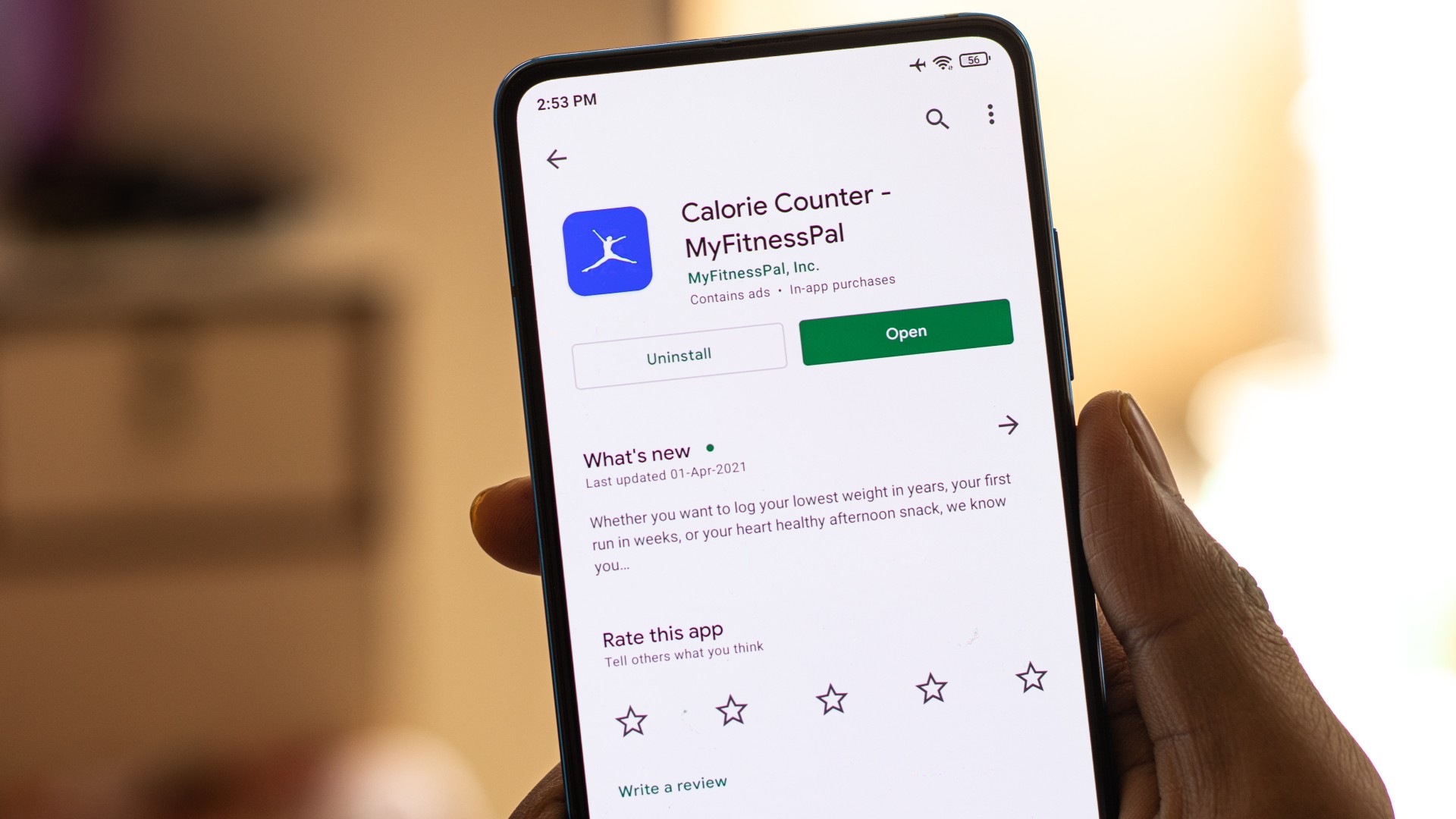
Counting macros is a tried and tested way to lose fat, build muscle, or reach maintenance when considering body recomposition. If you’re a beginner or unsure what the term “macros” even means, we’re here to help break it down.
Counting macros simply means monitoring your daily intake of macronutrients — protein, carbohydrates and fats. This can be done as a percentage of your daily calorie intake in grams and help you determine what you need more of, and when.
When it comes to nutrition, your macros are integral. It doesn’t matter if you’re an elite athlete, bodybuilder, or just starting your exercise journey because tracking macros could help you reach your goals and fuel your body appropriately. Here’s how to track your macros as a beginner, and why you might want to.
What are macros?

Counting calories is a well-known process used by many to keep on top of weight loss, gain, and maintenance, but macro counting looks at the quality of your intake instead, particularly around protein, fats and carbs.
Your body uses these macronutrients for various processes within the body to keep you healthy and functioning optimally. For example, protein supplies your body with amino acids (building blocks for muscle repair and growth) and provides 4 calories per gram; it also helps you stay sated.
Carbs are the body’s main source of fuel, breaking down into glucose to store as energy, containing 4 calories per gram. Unsaturated fats (“healthy” fats) provide 9 calories per gram, help the body absorb vital vitamins, and promote cell function and insulation.
Fat is also the next best energy source when your body doesn’t have enough carbs to convert. Your body is most likely to rely on stores of glucose or tap into fats as a fuel source, whereas protein fuels recovery and rebuilding.
Sign up to get the BEST of Tom's Guide direct to your inbox.
Get instant access to breaking news, the hottest reviews, great deals and helpful tips.
How to count your macros
Everyone has different fuel requirements depending on lifestyle, biology and exercise habits, so we can’t stamp a number on macros. This is a good thing! You can uniquely calculate and monitor your macros for your needs, adapting them as your body and requirements change.
How much protein you need to build muscle will depend on factors such as body composition, goals and refueling. For example, someone looking to build muscle and bulk may prioritize a high protein intake and a slight calorie surplus (consuming more calories than you burn).
In contrast, losing fat will require a sustainable but moderate calorie deficit (consuming fewer calories than you burn), impacting how you calculate daily macros. Then there’s the sport or exercise you choose. Sprinters need fast-releasing carbs to fuel their efforts, whereas long-distance runners may prioritize slow-release carbs.
Macro counting can help anyone from elite athletes to the everyday gym goer to assess the quality, quantity and timing of food, and thanks to technology, there are apps for tracking macros and calorie intake.
You can find a macro calculator online just about anywhere. You’ll be asked to input personal information, including activity levels and goals, to determine an overall calorie target and the recommended percentage of carbs, fats and proteins.
Most calculators worth their salt are comprehensive, so you’ll answer questions on losing weight, building muscle, or whether you’re looking to maintain your efforts (known as calorie maintenance, or consuming roughly the same amount of calories as you burn).
Once you have these numbers, there are plenty of macro-tracking apps, including the most popular one, MyFitnessPal, which helps you keep on top of tracking and allows you to input your targets and scan consumed foods and drinks into the app. From here, everything is calculated for you, with handy graphs to show your progress.

Is counting macros good for weight loss?
Combined with regular exercise and other daily activities, calorie counting could help you maintain a calorie deficit, biologically priming you toward fat loss. Note that weight and fat loss are often used interchangeably, but aren't the same thing.
You can step on some of the best smart scales in the morning and weigh a different number in the afternoon, simply because of food or water consumption. Fat loss takes time and for some people, can be tricky to navigate.
Calorie counting has typically been adopted for those looking to balance energy in (food and drink consumption) versus energy out (calories burned through movement, exercise, sleep, eating and simply existing).
Once you know this number, prioritizing high protein could help you stay fuller for longer and build lean muscle mass, which is more metabolically active, and help you split your remaining calories between fats and carbs.
Staying in a slight calorie deficit is how people lose weight and tap into fat loss, but considering the Dietary Guidelines For Americans recommend anywhere between 1,600 and 3,000 calories per day, you’ll need to focus on lifestyle, workout efforts, genetics (including your metabolism) and gut microbiome to determine your needs.
Interestingly, research published by the New England Journal of Medicine found that “clinically meaningful weight loss” results from a reduced-calorie diet regardless of macro splits. This suggests that the quantity of calories is the main driver. However, quality plays a vital role, especially if you want to build or maintain lean muscle mass and fuel your body appropriately.
Who shouldn’t track macros?
It’s not for everyone. As a trainer myself, I won’t recommend tracking macros or calorie counting unless I have a relationship with the client and understand their goals and relationship with nutrition. Tracking can lead to restrictive and obsessive behavior, so if I’m trying to build mental strength with a client, tracking might not be the priority.
That said, for many, tracking macros can actually build a better relationship with food, create awareness and improve balance and lifestyle. It’s also a tried and tested method for achieving your aesthetic and performance goals, fueling the body for exercise, and recovery, learning what to eat before a workout, or training fed or fasted.
What is the easiest way to start counting macros?

If you’re ready to get started, here’s my approach to counting macros:
- Choose a macro calculator
- Enter your age, sex, height, weight and other biological information when asked
- Enter your goals — maintain, lose, or gain weight, or maintain or build muscle
- Enter your activity levels
- Press calculate.
As an example, I’m a 33-year-old female with a height of 5”2, weighing 125 pounds, and looking to lose weight. I exercise moderately (in this instance, this means up to 5 days of moderate exercise or sports per week).
My calculator suggests a calorie intake of 1709kcal per day, splitting carbs by 40%, protein by 40% and fats by 20%; this equates to 684kcal for carbs and fats, each, and 342kcal for fats. According to my calculator, this gives me a caloric deficit of 200-600kcal, depending on activity.
Bottom line
Although macro tracking and calorie counting walk hand in hand, focusing on macros can be a sustainable and long-term method for achieving your fitness goals. Trust me, if you want ice cream to fit your macros, you can make it happen — from time to time!
But food should be about enjoyment and nourishment, too, so experiment with what works best for you, take breaks from macro tracking if you need it, and re-calculate your macros as your body adapts and changes.
For many, macro tracking can help build a stronger relationship to nutrition, energy consumption and food quality, helping nourish your body with more of what it needs and when.
I’d always aim to include plenty of protein in your daily diet, balancing this with complex carbs that provide sustained energy release, healthy unsaturated fats and plenty of vegetables, fruit and micronutrients (vitamins and minerals). Moreover, the ever-growing body of research tells us a healthy, happy gut microbiome supports weight loss, healthy metabolism and improved overall health.
It’s also important to remember some dietary guidelines might be temporary under advice from medical professionals for those managing chronic health conditions. For example, diabetes, gluten intolerance, a chronic gut condition, obesity, or similar.
If you’re unsure, we recommend speaking with a registered dietician, nutritionist, or physician.
More from Tom's Guide
- Feeling bloated after a workout? Here's why.
- Here’s what happens to your body if you eat 1,000 extra calories a day
- 3 simple ways to lose weight without dieting

Sam Hopes is a level 3 qualified trainer, level 2 reiki practitioner and senior fitness writer at Tom's Guide. She is also currently undertaking her Yoga For Athletes training course. Sam has written for various fitness brands and websites over the years and has experience across brands at Future such as Live Science, Fit&Well, Coach, and T3.
Having worked with fitness studios like F45 and Virgin Active, Sam now primarily teaches outdoor bootcamps, bodyweight, calisthenics and kettlebells. She also coaches mobility and stretching-focused classes several times a week and believes that true strength comes from a holistic approach to training your body.
Sam has completed two mixed doubles Hyrox competitions in London and the Netherlands and finished her first doubles attempt in 1:11.









